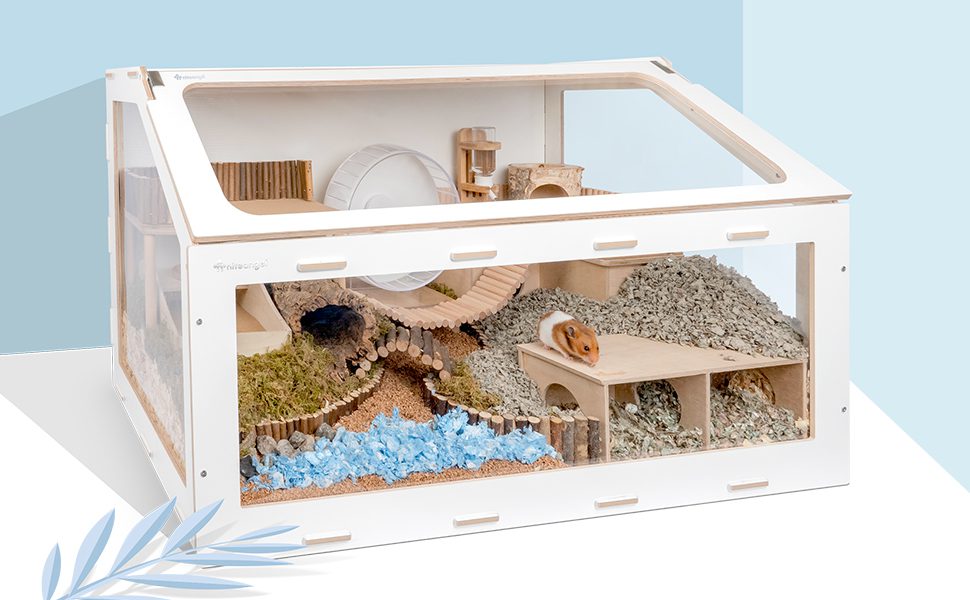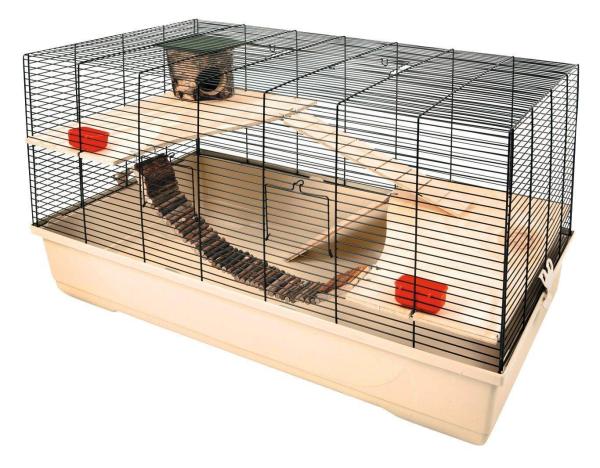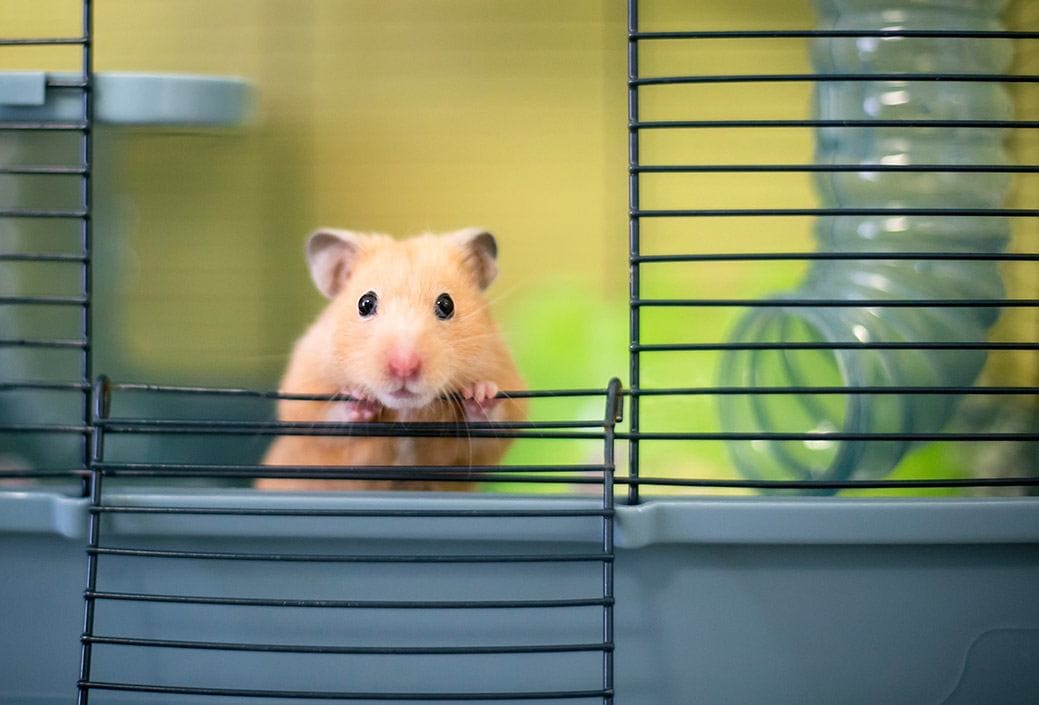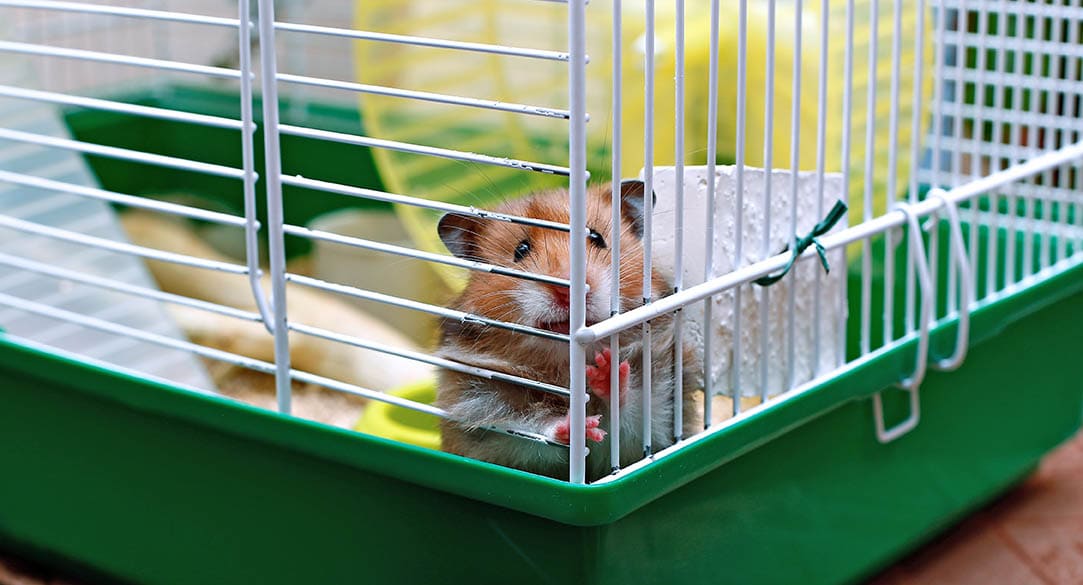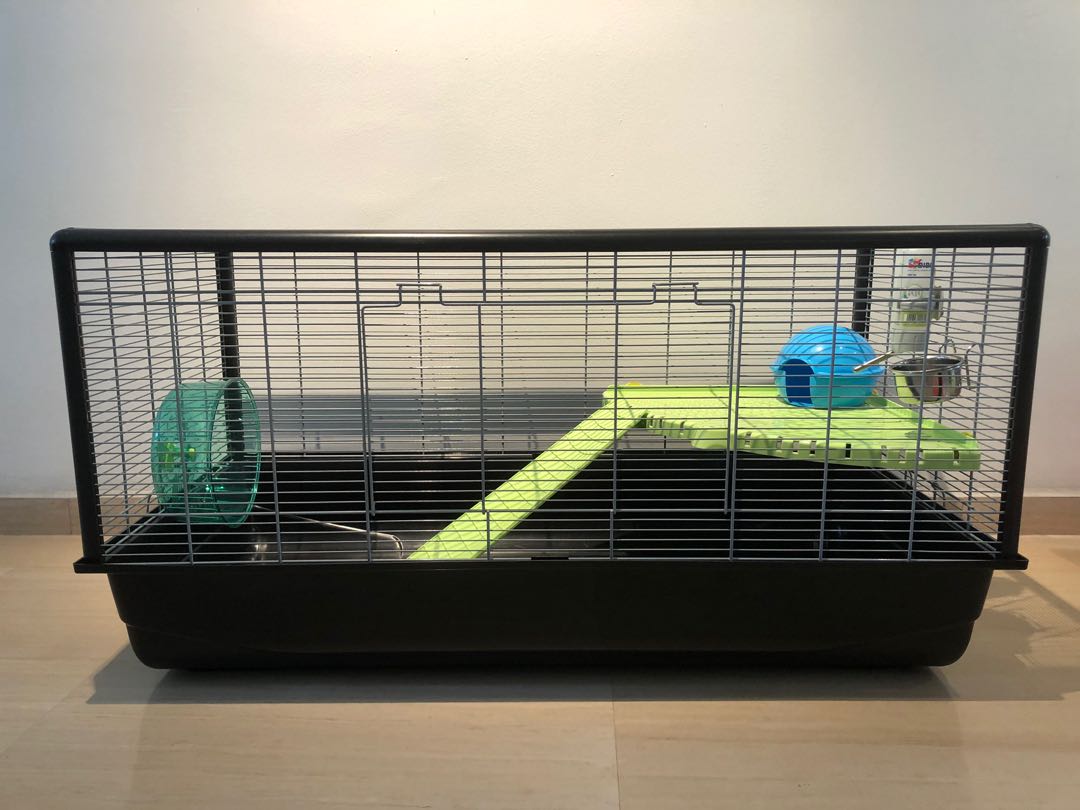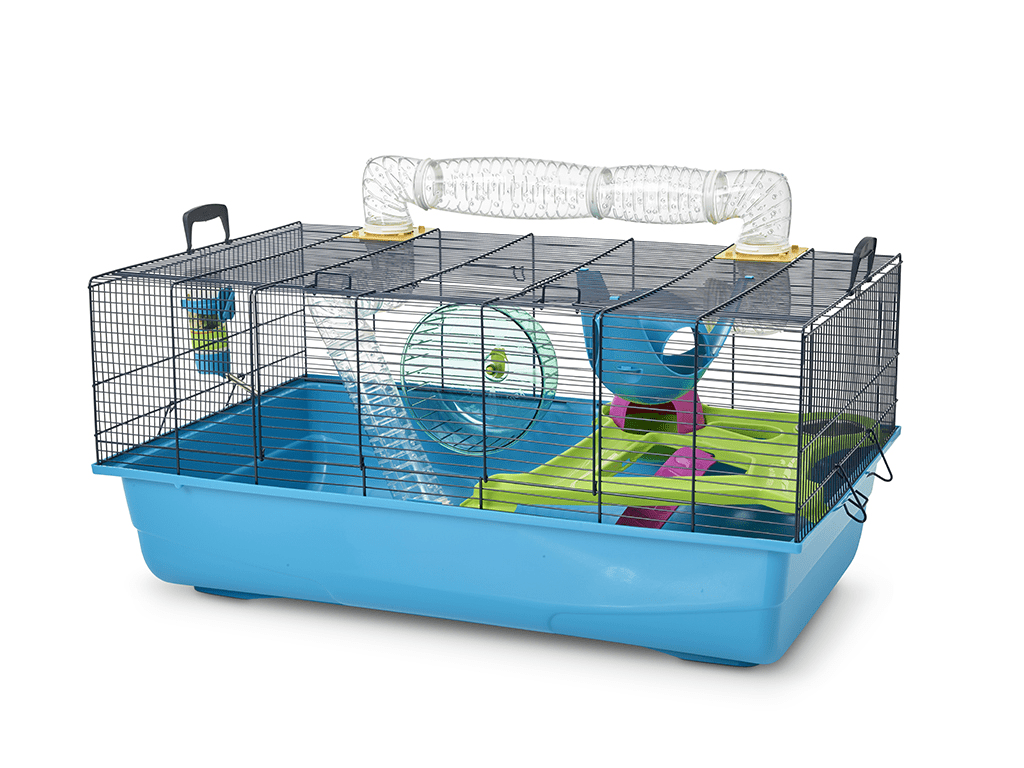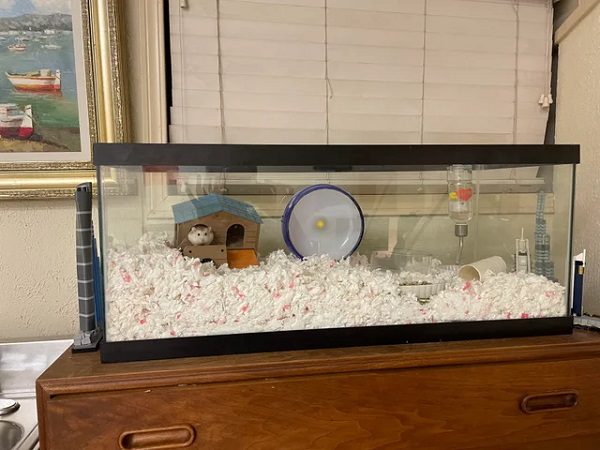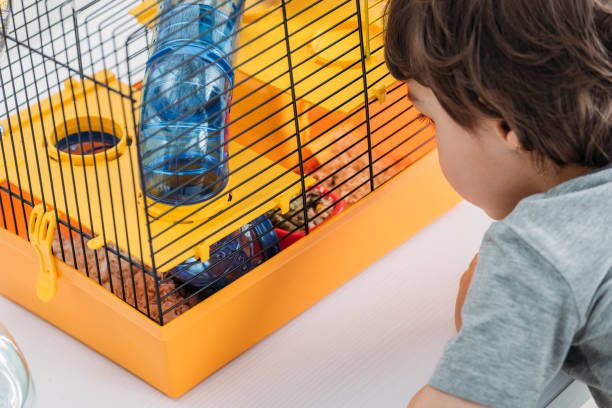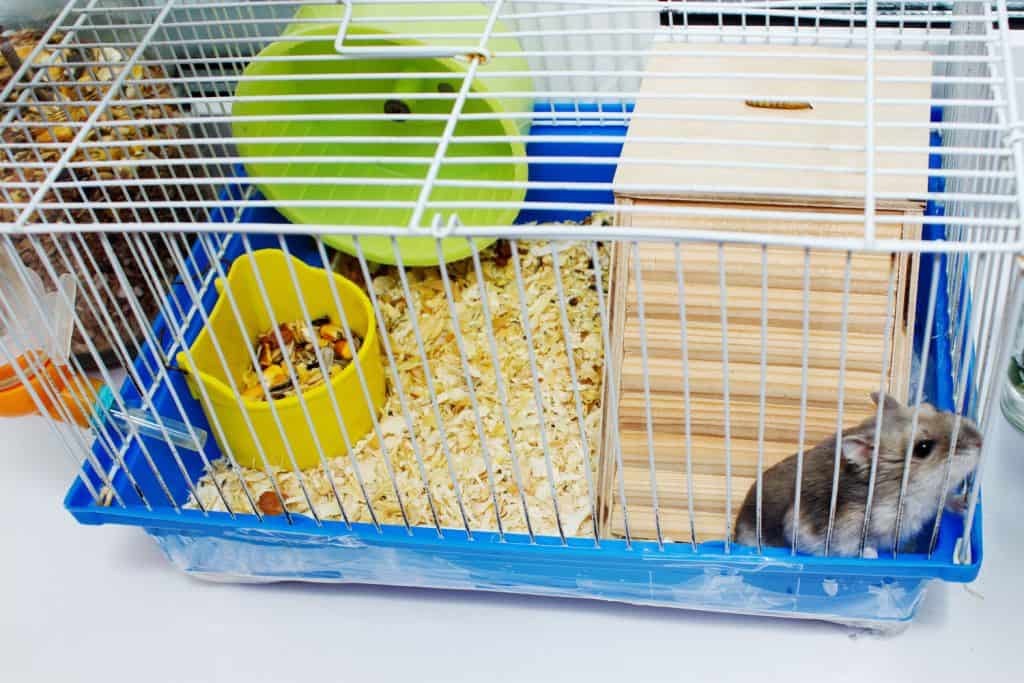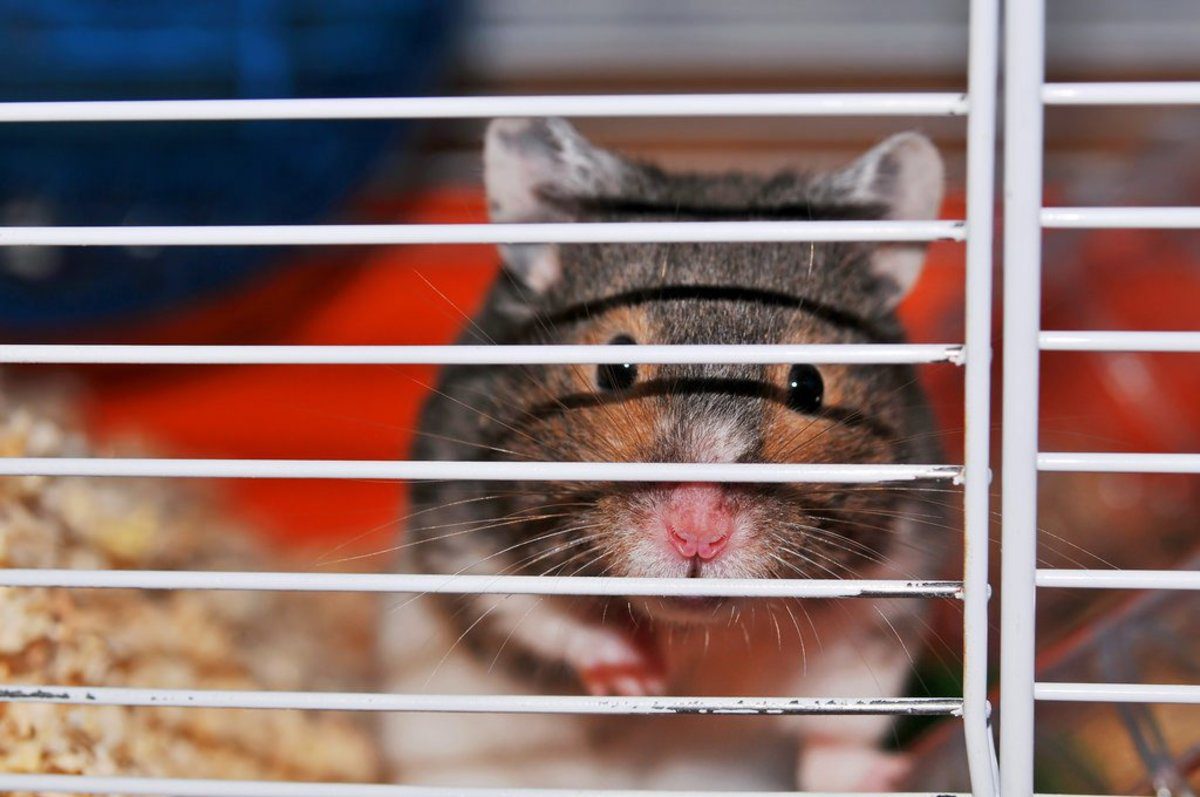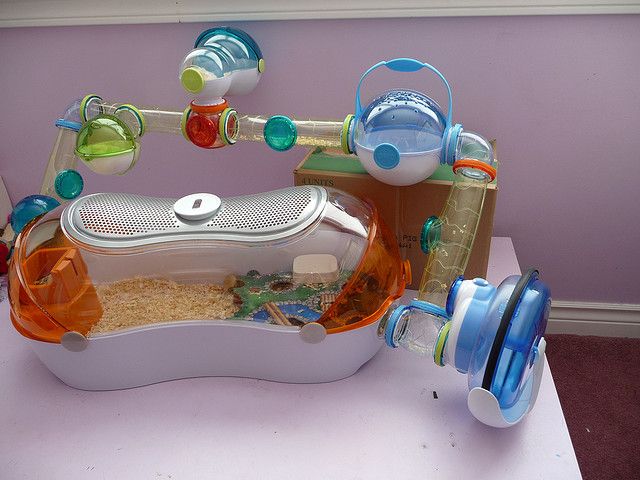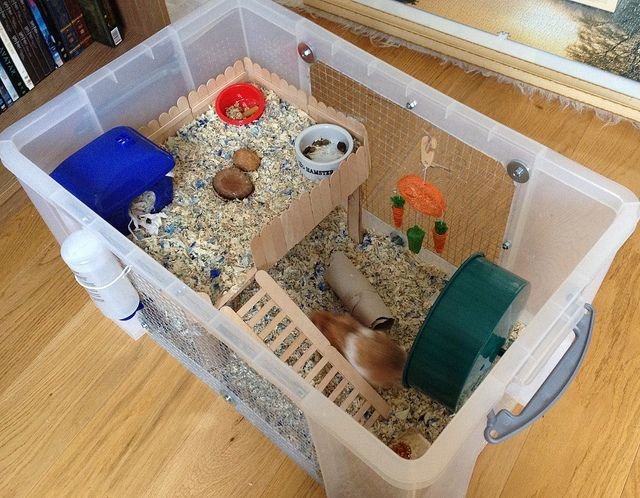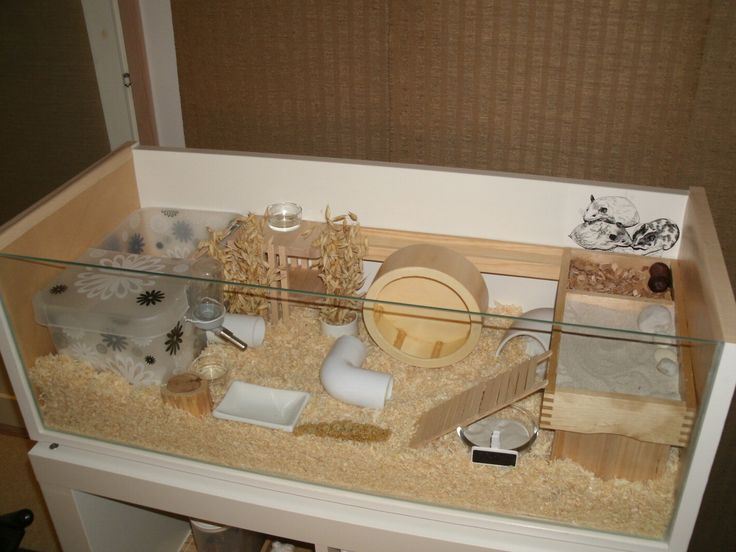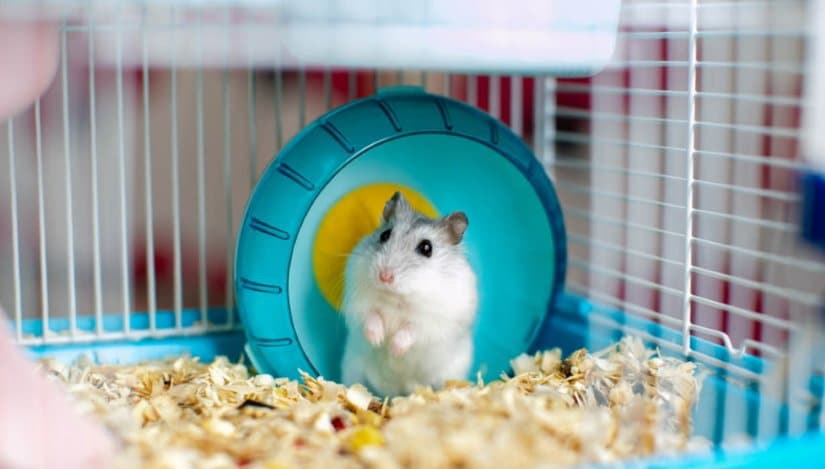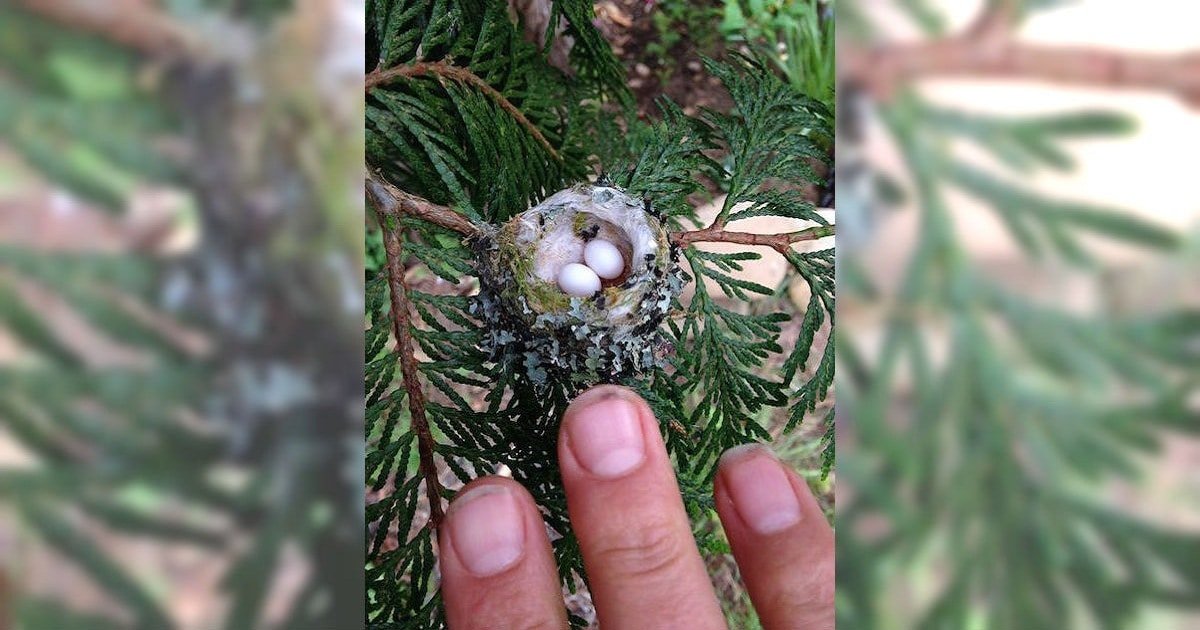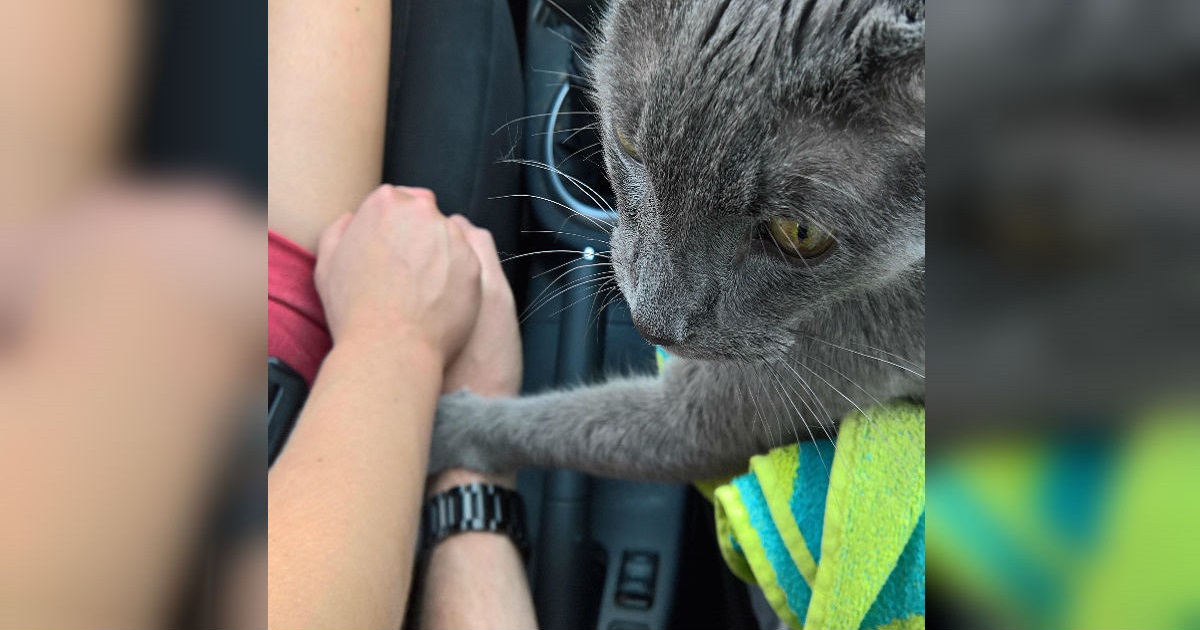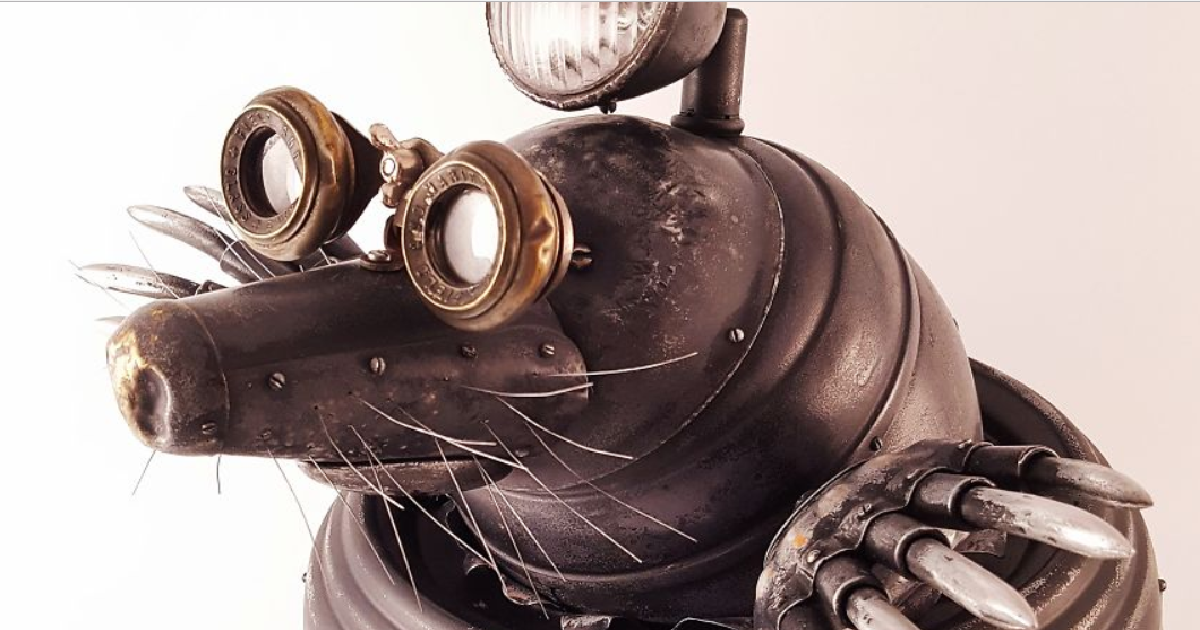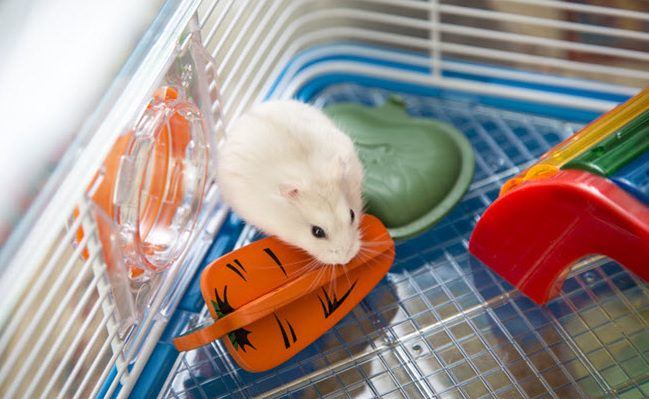
Are Large Cages for Hamsters Recommended?
Yes, the bigger the better if you are not limited by space. When it comes to choosing the right size cage for your hamster, there are a few things you’ll need to take into account. First, how big is your hamster? Second, how active is your hamster? Third, what type of cage do you want? Hamsters are small, delicate creatures that require plenty of space to run and play. So, how big should a hamster cage be? This article will discuss the ideal size for a hamster cage and tips on making the most of your hamster’s living space.
You may be surprised to learn that hamsters like a lot room as they are often kept in relatively small spaces. Additionally, they don’t like to remain in groups and don’t need several pets. Instead, they need a wheel, tubes, toys, and hiding places to be happy. Therefore, your cage will need to accommodate your fuzzy friend and all of her accessories (and, boy, does she like her accessories). Consider all of the stuff when you choose her terrarium and the ideal location for it, bearing in mind that your hamster tubes might even go outside the cage if you’re being inventive.
How Big Should a Hamster Cage Be in Square Inches?
We’ve previously discussed how larger cages are always preferable (within reason). You should aim for at least 650 square inches of room for the hamster as you can’t go much less than 36 by 18 inches (648 sq inches)
She’ll have plenty of areas to spread out on her bedding, spin the hamster wheel, and create a bathroom in this place (many rodents choose a specific location and stick with it). Of course, you may experiment with other sizes; consider unconventional floor plans with many rooms or multistory homes, all of which will add space. There are various ways to get your hamster to fit in your chosen area.
Hamster Cage Requirements
Choosing the ideal hamster cage requires considerably more effort than just going to the local pet store and purchasing the adorable, colorful cage that is currently on sale and that your child adores. That will probably make the hamster unhappy and stressed out. Much more is needed than that. To ethically keep your new pet, you must first ensure that your new hamster cage satisfies the requirements listed below.
Step 1 — Minimum Size Requirements
Syrian Hamsters – Cage Size
The minimum cage size required for a Syrian hamster is 900 square inches of floor area. This is around 40 × 20 inches for a standard cage, with a bedding depth of 10 inches. This is the minimal room needed to hold them, and you should always strive for more. The height must be at least 24 inches tall to accommodate bedding and a small wheel. Similar to size, higher is preferable.
Dwarf and Chinese Hamsters – Cage Size
Despite their small size, Chinese and Dwarf Hamsters still need enough area to run about. The best floor area to strive for is 700 square inches or around 40 by 15 inches per hamster. But, again, the height has to be at least 24 inches, and they also require a depth of 6 to 8 inches for proper bedding.
As a Hamster owner, it’s important to remember that these are only basic recommendations, and you should constantly strive to give your hamsters more room since it will make them happy. This is particularly important if you want to provide your hamsters with toys and wheels in their cage or if hamsters don’t like to be let out of their cage.
Bar Spacing
If you choose a wire cage, pay attention to the distance between the bars to prevent your hamster from escaping. The kind of hamster you have will determine the wire cages bar spacing:
- Syrian hamsters may live with a bar spacing of 1⁄2 inches or less.
- Since they can squeeze through anything bigger, smaller dwarf species need a bar spacing of no more than 1⁄4 inches.
A Deep Base
The depth of the cage foundation is a crucial factor to consider when purchasing a hamster cage. Your hamster needs bedding at least 6 inches (15 cm) deep so it may dig tunnels. Your bedding should ideally be 10 inches (25 cm) or longer to give your hamster even more burrowing fun. Syrian hamsters need deeper bedding since they are bigger, at least 12 inches (30 cm) long.
A Large Wheel
Hamsters may run up to 9 kilometers every night in the wild. While a hamster wheel will enable him to run as much as he wants, a spacious cage will more closely reflect your pet’s natural environment in the wild and allow for various forms of enrichment.
A large enough hamster wheel often cannot fit in tiny hamster cages marketed as modular systems of linked smaller sections. Unfortunately, most of those little cages come with wheels that are smaller than the bare minimum a hamster requires—more than 8 inches in diameter for dwarfs and 12 inches for Syrians (20 cm for dwarfs and 30 cm for Syrians).
Small wheels make your hamster’s back bend when he runs, which, given how much time he spends on that wheel, is likely to develop back discomfort and other back problems.
When purchasing a hamster cage, remember that it must have a deep base for substrate and a height that will accommodate a big wheel.
Step 2 — Types of Cages
Now that you have a great size suggestion, you’ll need to decide what kind of cage you want to put your hamsters in. Hamsters are kept in various cages, each of which has specific benefits and drawbacks. The most crucial factors are cage material, ventilation, cleaning convenience, and substrate appropriateness.
Wire Cage
The most accessible hamster cages are made of wire or mesh. They are a fantastic solution because they are chew-proof, well-ventilated, and fast and straightforward to clean. The drawback of most variations is that your hamster won’t be able to burrow since they are not deep enough for the necessary quantity of substrate. Additionally, it’s simple to push the substrate and bedding out of the wire sides and create a mess.
Tank and Wire Top
Tank and wire top with a wire or mesh top that clips on and off. They feature a plastic or glass tank base with ample room for digging substrate. As a result, they are highly ventilated, easy to clean, and comparatively escape proof, making them the best of all worlds.
Vivarium or Aquarium
Although they are not explicitly intended for hamsters, aquariums may be used to house them effectively. They are usually constructed of glass or Perspex and have a mesh top, allowing your hamster to burrow within them to its heart’s delight. The drawback of these tanks is minimal airflow, even with the mesh top. They are also heavy, which makes it challenging to move and clean them.
Step 3 — Cage Location
Your cage size also depends on where you want to keep your hamster. Larger cages will have fewer options available, and moving them around will be more challenging. The area must be exposed to natural sunshine, experience night and day cycles, have air circulation, and maintain a consistent temperature. The cage is best positioned in a closed room for temperature control, on a table above the floor, adjacent to a window for circulation and sunshine, and away from other animals like cats and dogs.
The cage should have enough indirect sunlight to keep your hamsters comfortable and alert them to the natural day and night cycles but never in direct sunlight, which may rapidly heat them.
Step 4 — Accessories
There are other factors besides the minimum cage sizes for each species. For example, while having enough room is crucial for a hamster to be happy, they also need to be able to exercise their natural inclinations like they would in the wild. Hamsters are energetic rodents who like exploring their environment.
You must add objects that will foster this activity, and their cage should let them display their natural behaviors. For example, foraging will be encouraged by dispersing their food around the cage, while wheels and tunnels keep them active and occupied. Diverse substrates like wood and sand baths will provide them with exciting textures to explore. Since hamsters can’t see very well, they need other forms of sensory stimulation to keep them happy through various textures and scents.
Furthermore, hamsters like having a “home inside a home” where they can rest and enjoy a little privacy. You’ll need additional room if holding several hamsters in one cage. You need to consider the size of these add-ons when determining the appropriate cage for your hamster.
Is Your Current Cage Too Small?
You can determine whether your hamster feels anxious in his cage by looking for certain behaviors. For instance, a stressed hamster may attempt to gnaw his way out of the cage. You’ll see him chewing on the bars if you have a metal cage. This will be easy to tell if your hamster doesn’t enjoy his surroundings since happy hamsters don’t often chew the bars too much.
Hamsters that experience extreme stress due to their living circumstances may develop the mental illness known as cage fury. This often occurs when a hamster is confined in an inadequately sized cage, which stresses them out regularly.
I would strongly consider obtaining a larger cage for your hamster’s well-being if the size of the one you now have is less than the minimum advised of 620 square inches.
Examples of the Best Hamster Cages on the Market
Prevue Hendryx 485 Pet Products Wodent Wheel Dent Resistant Exercise Roller
This is one of the best cages on the market for hamsters. It’s made from high-quality materials and comes with everything your hamster needs, including a water bottle, food dish, and exercise wheel. There is also plenty of space for your hamster to run around and play.
Kaytee My First Home Multi-level Cage
It is another great option for hamsters because it is easy to assemble and comes with two levels, so your hamster can explore and stay active. It also has several features to keep your hamster entertained, such as a hammock, ladder, and exercise wheel.
Ware Manufacturing Chew Proof Critter Cage
This is an excellent choice for hamsters who chew on their cage bars. It’s made from powder-coated steel that is virtually impossible for your hamster to chew through. In addition, it has all the necessary accessories, including a water bottle, food dish, and exercise wheel.
Critter Nation Single Unit with Stand by Midwest Homes for Pets
This is an excellent option for anyone with a smaller budget but still wants their pet to have plenty of space to move around. The cage is 36 inches wide, 24 inches deep, and 39 inches tall, and it comes with a removable plastic tray that makes cleaning a breeze. It also has two levels, so your hamster can explore its heart’s content.
Habitrail OVO Loft Cage
This Habitrail cage is a superb option for those who want their hamster to have many options for exploring and playing. The cage is 22.5 inches wide, 17 inches deep, and 28 inches tall, and it comes with two levels and plenty of tunnels and tubes for your hamster to play in.
Ferplast Duna Multy Hamster Cage
This Ferplast cage is a wonderful option for those with a larger budget who want their hamster to have plenty of space to move around. The cage is 35.4 inches wide, 21.7 inches deep, and 25.6 inches tall, and it comes with three levels for your hamster to explore. It also has a removable plastic bottom that makes cleaning quick and easy.
What other cages should you consider?
A hamster periodically becomes restless and wants to play outside her house, no matter how spacious her cage is. Consider purchasing a pen so she may roam around while interacting with you and your family. As an added precaution, some owners choose to hamster-proof the space, but you should never leave your pet alone, not even in a pen. Finally, a travel cage is necessary for visits to the veterinarian. Sometimes, she may only spend a few minutes there, but this place may be substantially smaller than her usual dwelling quarters. Whatever you find most convenient to carry will do.
Choosing the proper location in the home for the cage is perhaps one of the most challenging aspects of acquiring the ideal size. Since hamsters spend most of their time playing at night, you should keep her sleeping area as far away from yours as you can unless you want to be awakened every night by the sound of her running (which happens to be all night). But there are certain benefits to being nocturnal. You can keep the cage close by during the day, and she’ll probably sleep for most of it (no promises, however). Find her a permanent home that isn’t too close but also isn’t so far away that you can’t readily get in touch with her daily.
What Kind of Hamster Cages to Avoid?
Parents often choose those little, vibrant hamster cages with modular systems since they are so well-liked by children. From a hamster’s perspective, however, these cages don’t provide nearly the room or enrichment that all hamsters need and deserve.
Because hamsters require a deep substrate where they may dig and burrow, cages with wire flooring are not a good option because they cannot contain the substrate unless they are covered with a deep tray that will keep the bedding in. Another danger is that your hamster’s feet, known as bumblefoot, might develop problems from constantly walking on wires. Given everything, staying away from these kinds of cages is preferable.
Tips to Keep Your Hamsters’ Cage Clean
1. Schedule some time for cleaning.
Once a week is usually sufficient. Set aside about 30 minutes to an hour to do a thorough job.
2. Gather your supplies.
You’ll need a small trash can, a whisk broom and dustpan, paper towels, and a mild disinfectant or vinegar solution. For the vinegar solution, mix 1 part vinegar with four parts water.
3. Remove your hamster from the cage.
This is probably the most crucial step because you don’t want your hamster to be in danger while cleaning its cage. Place your hamster in a safe place, like a playpen or exercise ball, until you’re finished cleaning.
4. Empty the contents of the cage into the trash can.
This includes any bedding, food, or water dishes. Be sure to dispose of anything your hamster has chewed on since it could also be contaminated with bacteria.
5. Wash all removable items with hot water and mild soap.
This includes food and water dishes, bedding, and toys your hamster has in its cage. Let everything air dry completely before putting it back in the cage.
6. Clean the inside of the cage with hot water and mild soap.
Use paper towels to wipe down all surfaces, particularly in areas with visible dirt or stains. If there are any stubborn spots, scrub them with a soft brush or cloth dipped in vinegar. Rinse the cage thoroughly with clean water when you’re finished, and let it air dry completely before putting anything back inside.
7. Add fresh bedding, food, and water dishes to the cage once it’s cleaned.
Then, put your hamster back in its home and watch it enjoy its newly cleaned quarters!
Final Thoughts
Cages come in all different shapes and sizes, but how big should a hamster’s cage be? The answer depends on a few factors, including the size of your hamster and how active she is. A good rule of thumb is choosing a cage at least 24 inches long and 12 inches wide. But if you have a particularly active hamster, you may want to go even bigger. Just be sure to avoid cages with wire flooring, as they can be dangerous for your hamster’s feet. With a little effort, you can keep your hamster’s cage clean and tidy so she can enjoy her home for years.
Frequently Asked Questions
Is a 20-gallon tank big enough for a hamster?
Two dwarf hamsters or one Syrian hamster may fit in a 20-gallon aquarium. While this size is adequate, a larger cage is usually preferable. You can think about acquiring anything up to 55 gallons in size if you have the room in your house to accommodate a bigger cage. However, no cage for a hamster will be too large
What size cage do two hamsters need?
The best floor area to strive for is 700 square inches or around 40 by 15 inches per hamster. But, again, the height has to be at least 24 inches, and they also require a depth of 6 to 8 inches for proper bedding.
Do hamsters get lonely?
No. A hamster never feels lonely. If they have no other option, they may live as a couple or small group, although there will sometimes be conflicts, and most of the time, they will need to be divided into individual cages.
Do hamsters recognize their name?
Yes. A hamster may be trained to know its name. They will always answer when you call them out once they have mastered it.

